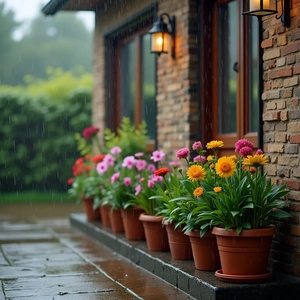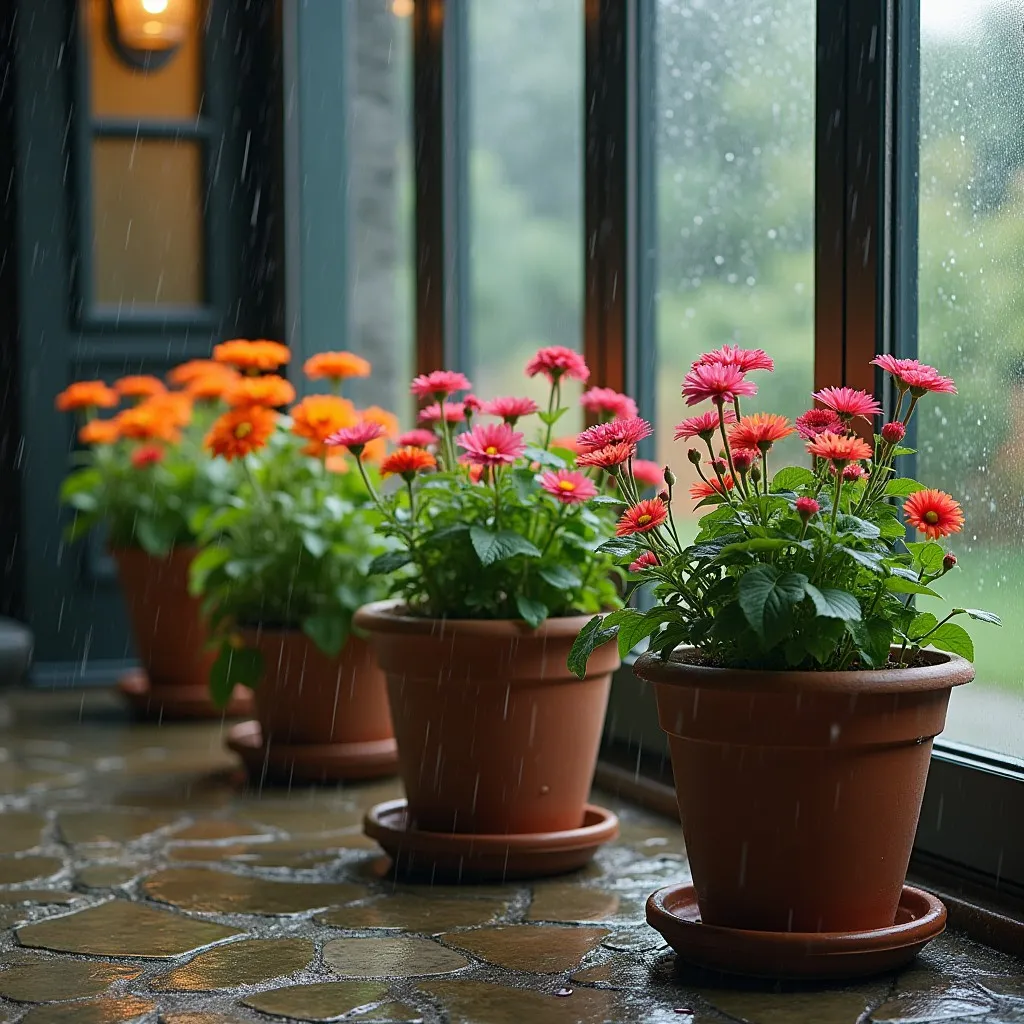
Plants in a pot by the front door are living accents that make a house feel cosier and more inviting. However, they often face harsh conditions: relentless sun, strong winds, or heavy rain that can lead to root rot. Yet with a solid care, though, the green companions can thrive in any weather. This article covers how to keep front door planters healthy and vibrant, avoiding decline – or even worse, wilting.
First, Choose Resilient Plants
The very first rule is to always avoid delicate species at the entrance. The thing is, not all plants tolerate temperature swings – both scorching sun or icy winds. That said, in hot, dry climates, consider succulents (echeveria or sedum), as well as drought-resistant options such as lavender.
And in colder regions (Scotland, for instance), opt for frost-hardy varieties: boxwood, ivy, or dwarf conifers. Seasonal updates with annuals in a spirit of petunias, marigolds, or begonias will provide summer blooms, though they’ll might need replacing when temperatures drop.
Second, Protect the Existing Plants Against Heat and Drought
Summer usually brings intense sun and root overheating.
And in order to help plants cope, choose pots made of materials that don’t absorb heat. Ceramic, wood, or light, thick plastic. You name it.
But avoid metal pots. Especially dark ones, unless they’re placed in shade.
Do not that watering in hot weather requires balance: neither too dry nor waterlogged. So, check the soil by finger – if the top layer’s dry, it’s time to water. Early morning or evening is best, reducing evaporation.
On top of everything, mulching with expanded clay or decorative stones helps retain moisture.
Third, Shield Everything from Cold and Wind
Winter’s main threat is frozen roots. Thus, if temperatures dip below freezing (rare in the UK, yet still possible), move pots indoors or under cover – a porch or vestibule works well.
For extra insulation, to keep the things warmer, line pots with foam.
Wind is another concern. Particularly in the UK. It can snap stems or topple lightweight pots. Prevent this by selecting heavy, wide-based containers or securing them with stands. And remember that tall plants may need staking for support.
Fourth, Prevent Waterlogging
Prolonged rain risks waterlogging and root rot. Ensure pots have drainage holes and a gravel layer at the base. If rain persists, relocate plants under shelter or tilt pots to drain excess water.
Should be noted that damp climates also encourage fungal diseases. To prevent this, space plants well, remove dead leaves promptly, and apply preventive treatments occasionally.
Fifth, Maintain Regular and Structured Care
Even hardy plants need attention. Inspect them regularly for pests or yellowing leaves. Feed them moderately – every 2-3 weeks in spring and summer, yet sparingly in autumn and winter when growth slows.
By adapting to climate conditions and responding to weather changes, front-door plants can flourish year-round. A little care goes a long way, rewarding you with lush foliage and vibrant blooms. No matter the weather.
Here’s the thing: even though it’s warm in summer, unexpected and slightly colder spells can occur. While this might be pleasant for some, it can be destructive for certain plants. This issue is common but often overlooked, so we recommend paying attention to this small checklist to protect your garden crops during such periods.

A Little Checklist to Rule them All
Here’s the thing: even though it’s warm in summer, unexpected and slightly colder spells can occur. While this might be pleasant for some, it can be destructive for certain plants. This situation is common but often overlooked, so we recommend paying attention to the checklist below in order to protect your garden crops during such periods:
- Monitor soil moisture. You’ll need to reduce the usual watering rate, yet don’t let the soil dry out completely, as this can make plants more susceptible to freezing. Keeping the balance is key to their survival.
- Use preparations and medicaments. Applying treatments c can help boost the immunity of the plants, therefore making them more resilient to sudden (and dramatic) temperature drops.
- Cover plants before nightfall. Non-woven fabric, straw, or pine needles work well for protection. But avoid using transparent film, as the morning sun can scorch the leaves through it.







